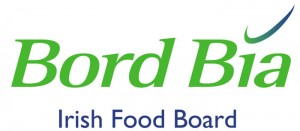Irish Food and Drink Exports Increase by 2% to Reach Record High of €11.15 Billion

The value of Irish agri-food and drink exports exceeded €11 billion for the first time ever in 2016, according to Bord Bia’s Export Performance and Prospects 2016-2017 report. “2016 marked the 7th successive year of growth of Irish food and drink exports, with a further 2% increase recorded to reach a record high of €11.15 billion, an expansion of 41% or €3.3 billion since 2010,” points out Minister for Agriculture, Food and the Marine, Michael Creed TD. “The strongest performing sectors last year were prepared foods (€1.92 billion, +9%), beverages (€1.4 billion, +4%) and dairy product and ingredients (€3.38 billion, +2%).”
He continues: “One of the notable features of this achievement is the impact of market diversification in the year in which the UK decided to leave the European Union. While trade with the UK fell by 8%, triggered by challenging exchange rates, uncertainty arising from Brexit and further competitive pressures, this was offset by increased exports to international and emerging markets such as North America (+€200 million to reach €1.1 billion), China (+35% to reach €845 million) and the rest of Asia (+6% to reach €330 million). An overall increase of 13% in shipments to international markets, to reach a value of approximately €3.5 billion, was particularly remarkable.”
 Meanwhile a welcome recovery was also seen in continental EU markets (+3% to reach €3.53 billion) as improving economic conditions led to stronger demand in key categories. The Euro strengthened by 13% against sterling in 2016 while there was little change in exchange rates with the US dollar. According to Bord Bia estimates, the underlying weakness and volatility of sterling negatively affected the competitiveness of Irish exports reducing the value of trade by a potential €570 million.
Meanwhile a welcome recovery was also seen in continental EU markets (+3% to reach €3.53 billion) as improving economic conditions led to stronger demand in key categories. The Euro strengthened by 13% against sterling in 2016 while there was little change in exchange rates with the US dollar. According to Bord Bia estimates, the underlying weakness and volatility of sterling negatively affected the competitiveness of Irish exports reducing the value of trade by a potential €570 million.
Noting that the UK referendum on Brexit had led to currency volatility and uncertainty, the Minister says this challenge, together with weakness in some commodity prices, highlights the importance of market access, of identifying market opportunities for value added products and of continued investment in innovation and competitiveness. “The UK will continue to be a critically important market for Irish agri-food products. The triggering of Article 50 and the continued uncertainty around Brexit will present significant challenges for the sector. However, the 2016 export figures illustrate clearly the importance of collaborative action by Government, its agencies and the industry, and the potential for pro-active effort on international markets to mitigate the risks associated with these challenges.”
Increased volume in key sectors, and an improvement in market demand for key categories, helped boosted trade throughout 2016. Padraig Brennan (pictured above right), Director of Markets at Bord Bia, explains: “Some 80% of total export growth in 2016 was recorded in trade to international markets where higher demand, improved market positioning and relatively steady exchange rates helped improve the competitive position of Irish exports. Since 2010, international markets have accounted for half of the growth in total exports, which reflects the industry’s ability to identify and develop new business opportunities. Irish food and drink exports to China have increased six fold in six years, while exports to North America and the Rest of Asia have doubled in the same period.”
Bord Bia Chairman Michael Carey comments: “Despite difficult trading conditions, it is encouraging to see this industry continuing to grow business and extend its global footprint to more than 180 markets around the world. Increased export volumes were recorded across a number of key categories, with milk availability over 5% higher during the first 10 months of the year and beef export volumes up 5%. The combined impact of higher output in these sectors is estimated to be in the region of €250 million.”
The strongest performers in terms of export growth in 2016 were prepared foods, sheepmeat, beverages, pigmeat and to a lesser extent dairy. Weaker prices negatively affected the value of beef and edible horticulture exports while lower volumes affected seafood exports. Livestock exports declined in value terms largely due to a significant reduction in live cattle shipments, while poultry exports recorded a significant decrease due to both reduced prices and lower volumes.
Looking Ahead to 2017
Export markets look set to remain challenging in 2017 amid ongoing market uncertainty. However, the pick-up in global dairy demand is expected to continue while further opportunities for growth are likely in beverages. Increased beef export availability may put some pressure on returns while prepared consumer foods exports are likely to face on-going competitive pressures, most notably the UK.
Noting the progress made in 2016 on improved market access for livestock and strengthening official relations with third countries through an ambitious programme of trade missions, Minister Creed adds that close working relationships of between his Department, the development agencies, producers and industry were a key strength of the Irish food, drinks and horticulture sectors.
“As an exporting country, we need to identify and act on market opportunities promptly. The continued efforts of my Department in international markets and the additional funding for Bord Bia’s marketing strategy, which I have made available in both 2016 and 2017, will assist Irish exporters in their efforts to retain and diversify export markets,” the Minister adds.



































